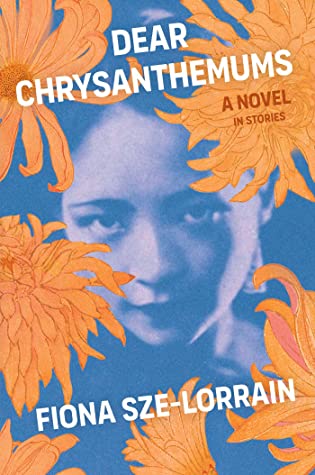 Dear Chrysanthemums: A Novel in Stories by Fiona Sze-Lorrain
Dear Chrysanthemums: A Novel in Stories by Fiona Sze-Lorrain Format: eARC
Source: supplied by publisher via Edelweiss
Formats available: paperback, ebook, audiobook
Genres: historical fiction, literary fiction
Pages: 176
Published by Scribner on May 2, 2023
Purchasing Info: Author's Website, Publisher's Website, Amazon, Barnes & Noble, Kobo, Bookshop.org, Better World Books
Goodreads
A startling and vivid debut novel in stories from acclaimed poet and translator Fiona Sze-Lorrain featuring deeply compelling Asian women who reckon with the past, violence, and exile—set in Shanghai, Beijing, Singapore, Paris, and New York.
“Cooking for Madame Chiang” set in 1946: Two cooks work for Madame Chiang Kai-shek and prepare a foreign dish craved by their mistress, which becomes a political weapon and and leads to their tragic end. “Death at the Wukang Mansion” set in 1966: Punished for her extramarital affair, a dancer is transferred to Shanghai during the Cultural Revolution and assigned to an ominous apartment in building whose other residents often depart in coffins. “The White Piano” set in 1996: A budding Asian pianist from New York settles down in Paris and is assaulted when a mysterious piano arrives from Singapore. “The Invisible Window” set in 2016: After their exile following the Tiananmen massacre, three women gather in a French cathedral to renew their friendship and reunite in their grief and faith.
Evocative, vivid, disturbing, and written with a masterful ear for language, Dear Chrysanthemums renders both a devastating portrait of diasporic life and inhumanity, as well as a tender web of shared memory, artistic expression, and love.
My Review:
In the beginning, or at least the chronological beginning of this “novel in stories”, there are two women in a third woman’s kitchen. That story, “Cooking for Madame Chiang, 1946” manages to both tell a complete story AND weave together all the threads that permeate the entire work in a way that seems to achieve more depth and more interconnectivity the more I think about it.
The two women in that kitchen, Little Green and Chang’er, are cooking for Madame Chiang Kai-Shek in 1946 after the end of the Second Sino-Japanese War, known in the West as World War II and just prior to the Chinese Communist Revolution.
All the stories in this collected novel relate back to those three women and what they represent, sometimes figuratively, often literally as many of the stories are centered around Chang’er’s descendants.
So this is a collection of stories of women’s perspectives on 20th century China, as seen through the eyes of Chang’er and her daughters and granddaughters who became part of the Chinese Diaspora in Singapore, while Little Green’s story is hers alone as her service to the Westernized Madame Chiang made her a target of the Revolution.
Some of the stories’ connections to Chang’er and Little Green are not obvious at first (“Death at the Wukang Mansion, 1966” is one such story) and are only revealed as the reader follows the course of the braided novel back and forth through time.
It is also symbolic that all of these stories take place in years that end in the number six, from the 1946 of “Cooking for Madame Chiang” to the 2016 of “The Invisible Window”. The number six in Chinese divination signifies a “smooth life”, something that none of the women in these interconnected stories manages to achieve.
But in their less than smooth lives we get glimpses of the choppy seas that each of them navigated, whether they remained in China or fled to far-distant shores, and how the experiences that led or followed them impacted the rest of their lives – and their century.
Escape Rating B+: I left this collection feeling both enchanted and teased. Each story is a bit of a treasure hunt and a chef’s kiss wrapped into one. The treasure is figuring out how each woman connects to the others. The chef’s kiss is in the way that each story is complete in itself, beautifully told, but still leaves the reader wishing for more – not necessarily more of that story in particular, but more of the history and background in general. The way the stories are each told make it clear that there are vast depths to be explored that this collection can only hint at.
I was also struck by the way that Dear Chrysanthemums manages to achieve the result that last week’s Daughters of Muscadine fell short of. Both are attempts to tell a kind of braided, linked story through a collection of stories, but Daughters missed that connectedness where Dear Chrysanthemums achieved it in every story through that treasure hunt of hints and references and casting back on long lives lived after tragedy and loss.
While there were a couple of stories that either didn’t work for me at the initial read (“Death at the Wukang Mansion”) or didn’t work at all (“The White Piano”), for the most part this collection told fascinating stories of women’s lives that hinted at so much to explore beneath the surface. I was initially a bit reluctant (last week’s reads were really frustrating) but I’m happy I picked up this gem after all.

 The Prisoner in His Palace: Saddam Hussein, His American Guards, and What History Leaves Unsaid by
The Prisoner in His Palace: Saddam Hussein, His American Guards, and What History Leaves Unsaid by